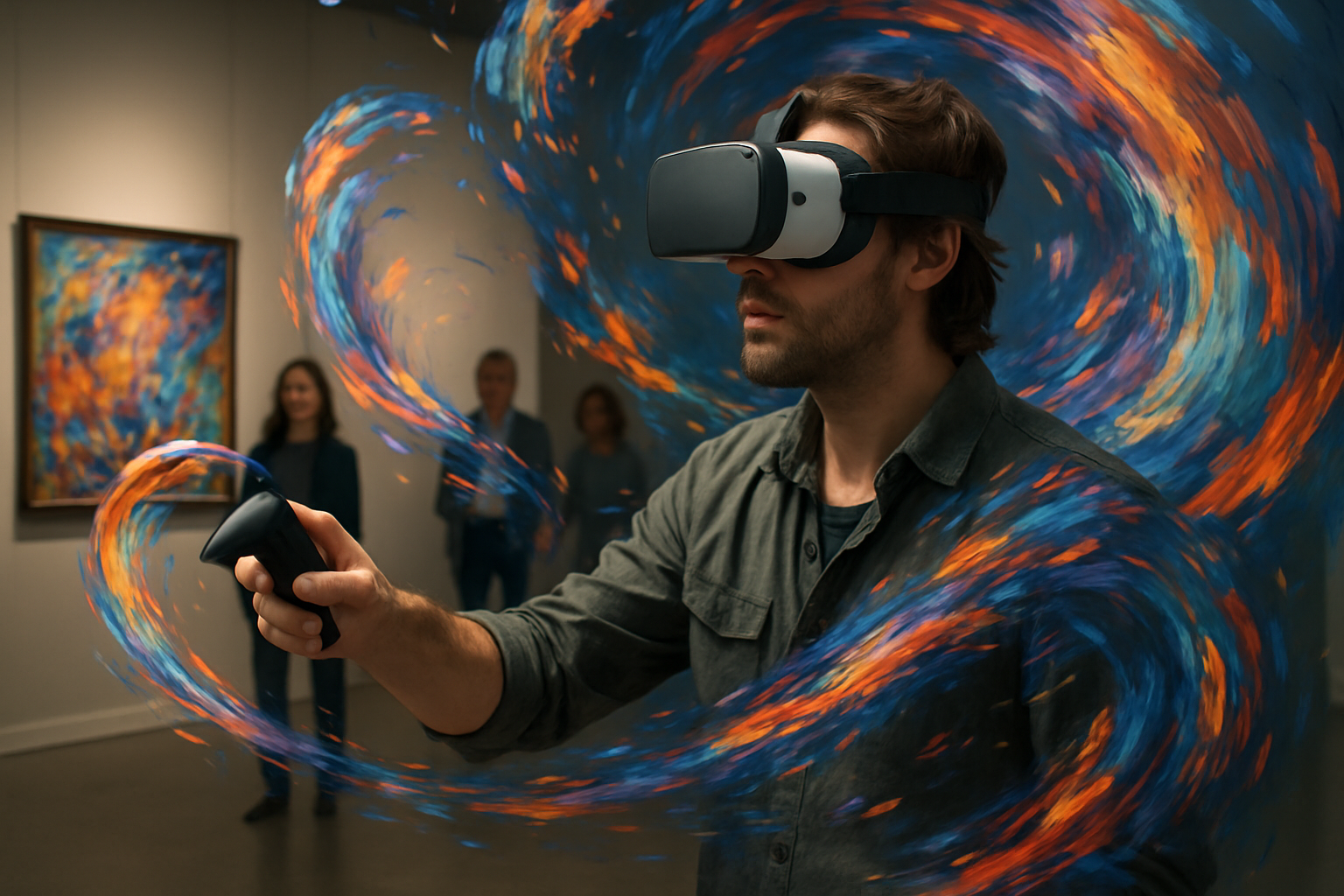Augmented Reality Galleries: The Next Frontier in Art Exhibitions
In the ever-evolving landscape of artistic expression, a groundbreaking fusion of technology and creativity is reshaping how we experience art. Augmented Reality (AR) galleries are emerging as the vanguard of this transformation, offering immersive, interactive encounters that blur the lines between the physical and digital realms. This innovative approach to art curation and display is not just a passing trend but a paradigm shift that promises to revolutionize the way we engage with artistic works. As traditional galleries grapple with space limitations and accessibility issues, AR presents a solution that expands the horizons of artistic presentation, allowing for boundless creativity and global reach.

Breaking Down Physical Barriers
One of the most significant advantages of AR galleries is their ability to transcend physical limitations. Traditional galleries are constrained by wall space and square footage, but AR exhibitions can be virtually infinite. Artists can now create sprawling installations that exist in the digital ether, accessible to anyone with a compatible device. This democratization of space has led to a surge in large-scale works that would be impossible to house in conventional settings.
Interactivity and Engagement
AR galleries offer a level of interactivity that static displays simply cannot match. Viewers can manipulate digital artworks, walk through virtual sculptures, and even contribute to the pieces in real-time. This participatory aspect transforms the audience from passive observers to active participants, fostering a deeper connection with the art. Museums and galleries are reporting increased engagement times and repeat visits as a result of these interactive elements.
Accessibility and Global Reach
Perhaps the most revolutionary aspect of AR galleries is their potential for accessibility. Art lovers from around the world can now experience exhibitions without the need for physical travel. This global reach not only expands the audience for artists but also promotes cultural exchange on an unprecedented scale. Educational institutions are leveraging this technology to bring masterpieces into classrooms, making art history more tangible and engaging for students.
The Curatorial Challenge
While AR galleries offer exciting possibilities, they also present new challenges for curators. The digital nature of these exhibitions requires a different skill set, blending traditional art knowledge with technological expertise. Curators must now consider factors such as user interface design, device compatibility, and digital rights management. This evolution of the curatorial role is leading to new specializations within the field and fostering collaboration between artists, technologists, and art historians.
Economic Implications for the Art Market
The rise of AR galleries is having a profound impact on the economics of the art world. Digital artworks can be sold as non-fungible tokens (NFTs), creating new revenue streams for artists and galleries. Additionally, the reduced costs associated with virtual exhibitions are allowing smaller galleries and independent artists to compete on a more level playing field with established institutions. However, questions about the long-term value and collectibility of digital art remain hotly debated within the industry.
Preserving the Past, Embracing the Future
AR technology is not just about creating new art; it’s also revolutionizing how we preserve and experience historical works. Museums are using AR to restore damaged artworks virtually, allowing visitors to see how pieces might have looked in their original state. This application of technology is breathing new life into ancient artifacts and providing invaluable tools for art restoration and education.
The Future of AR Galleries
As AR technology continues to advance, the possibilities for artistic expression seem limitless. From holographic performances to city-wide virtual installations, the future of AR galleries promises to push the boundaries of creativity even further. Industry experts predict that within the next decade, AR art experiences will become as commonplace as visiting a traditional gallery is today. This shift will likely lead to new forms of artistic expression that we can scarcely imagine at present.
In conclusion, Augmented Reality galleries represent a seismic shift in the art world, offering new ways to create, curate, and experience art. As this technology becomes more sophisticated and widespread, it has the potential to democratize art appreciation, foster global cultural exchange, and inspire new forms of creativity. While challenges remain, particularly in terms of technological accessibility and the preservation of traditional art forms, the benefits of AR galleries are undeniable. As we stand on the cusp of this new era in artistic expression, one thing is clear: the canvas of the future will be digital, interactive, and limited only by the boundaries of our imagination.





